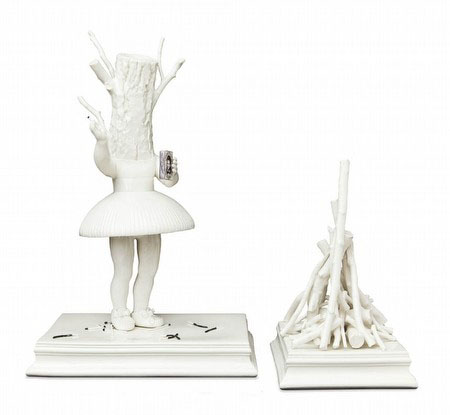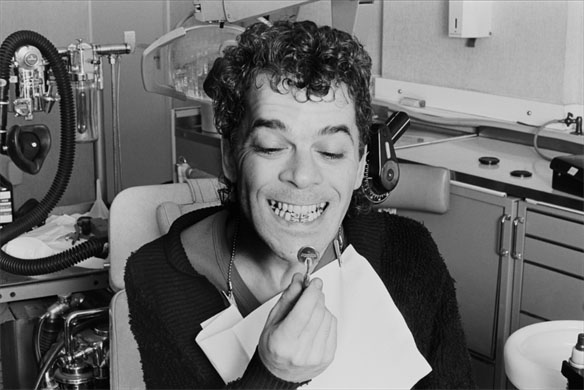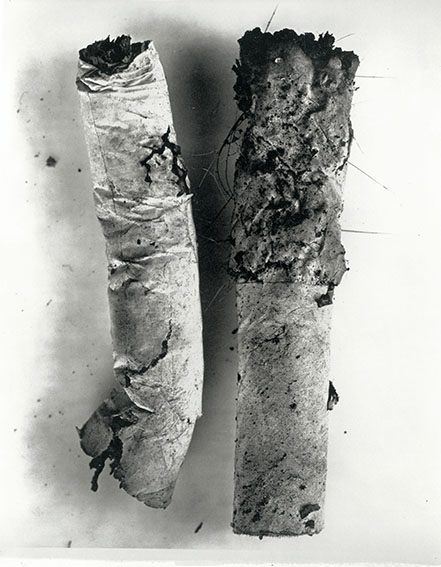OLIVIER CASTEL – FOUNTAIN
2014-04-14In 2010, aged eighty, the French actor Jeanne Moreau performed a public reading of the screenplay for Le Moine (The Monk), written by Luis Buñuel and Jean-Claude Carrière in 1970. Moreau was cast in the role of Mathilde, a wicked and seductive woman who disguises herself as a monk and causes a succession of terrible events, but the film was never realised.
For his exhibition at Ibid, Castel has made a re-recording of Moreau’s reading performed by a German woman, who happens to be a singer, and who speaks very little French. Like the majority of visitors to the exhibition, the narrator doesn’t understand the content of the French text. She performs the words as a melody. The meaning is removed and the language becomes abstract. In French, the words for voice (voix) and path (voie) are homophonous, suggesting the potential of the voice to create its own path.
Castel uses the voice to animate the room, like a musical box. The darkened room mimics the succession of spaces in which the story takes place – a monk’s cell, cellar, bedroom, confessional box, cave, carriage, dungeon, prison cell and balcony. The transformation of the room by Mathilde’s voice mirrors the transformation she operates on the main character, the monk, as he turns from piety to sexual desire, murder and ultimately Satanism.
The unrealised film is staged without images; comprising the voice, the room and a red spot of light from a moving head light, programmed to draw continuously on the gallery floor for the time taken to read the screenplay aloud. The light is reminiscent of a candle or a flame dancing in a fire. It recalls the Gothic, echoing the origins of the screenplay – a late 18th Century novel by Matthew Gregory Lewis – but also the proto-cinematic, as an elementary form of moving image.
A series of drawings on the walls break from the main focus of the exhibition and permit the visitor to explore the space on their own terms. The drawings are made of powdered cement, a material that is transformed as part of a process and used here in an unfinished state. The drawings are photographed in black and white and printed on acetate. Like the light, the drawings present a partial representation and one that is temporal, existing only long enough for the photograph to be taken.
Exhibition runs through to May 3rd, 2014
Ibid.
37 Albemarle Street
London
W1S 4JF




